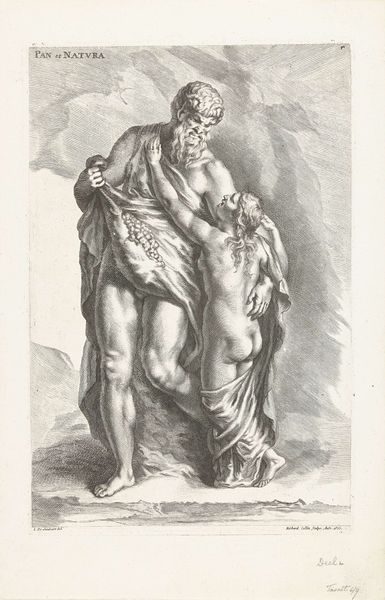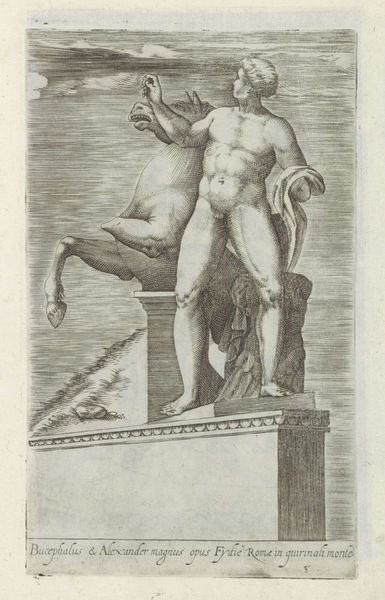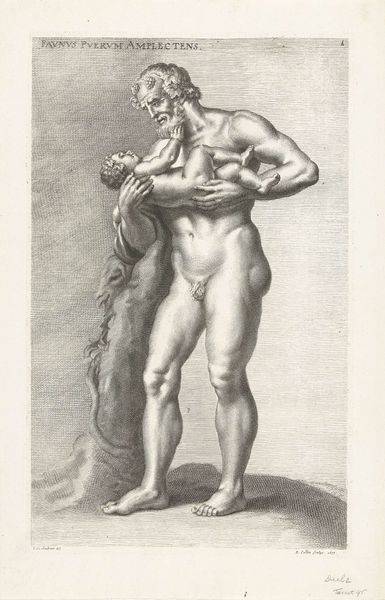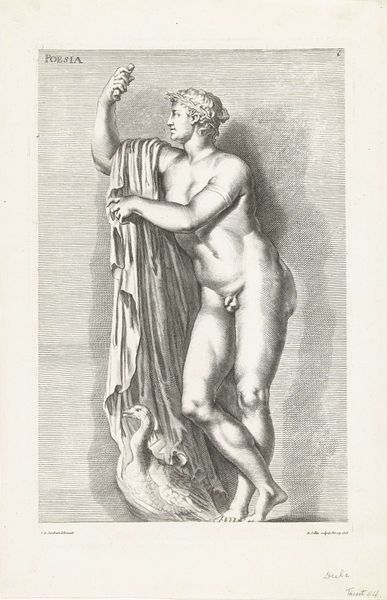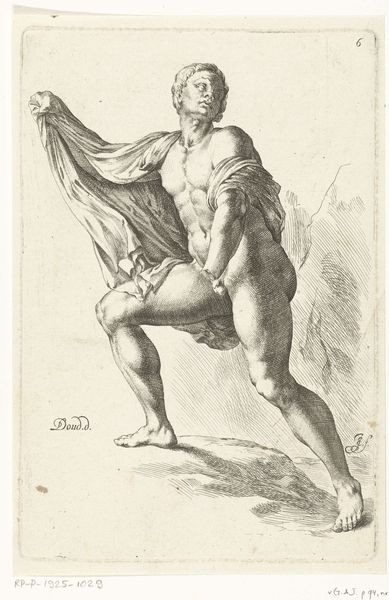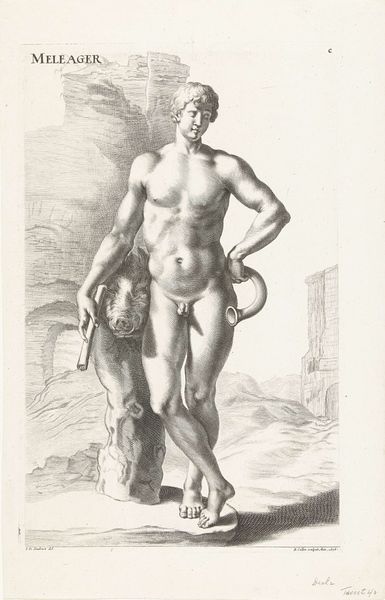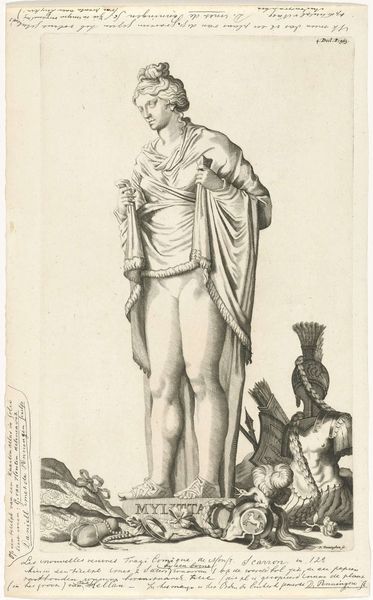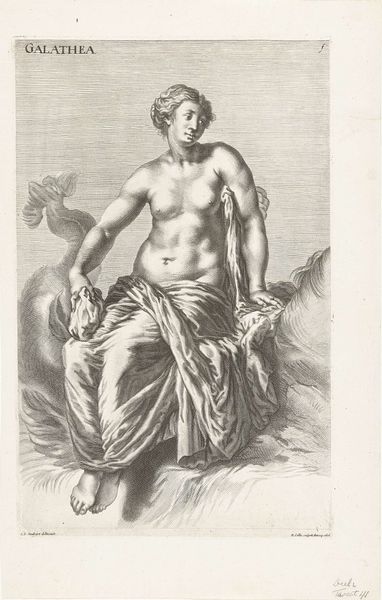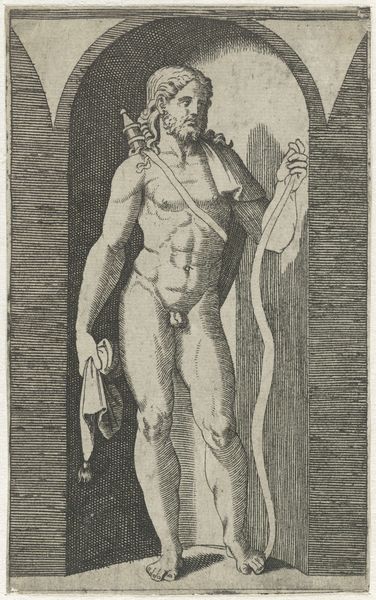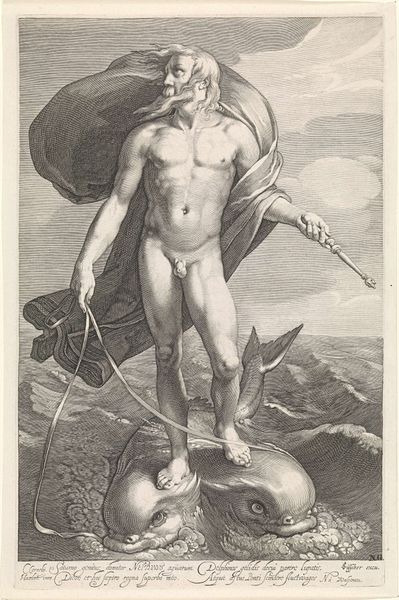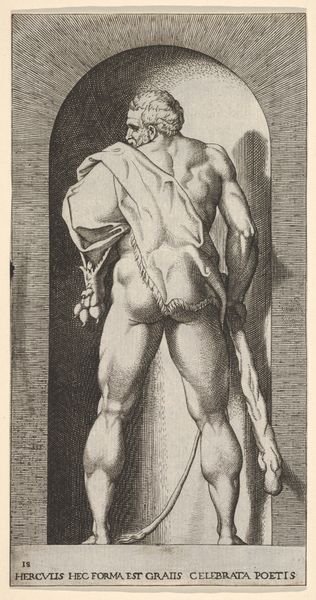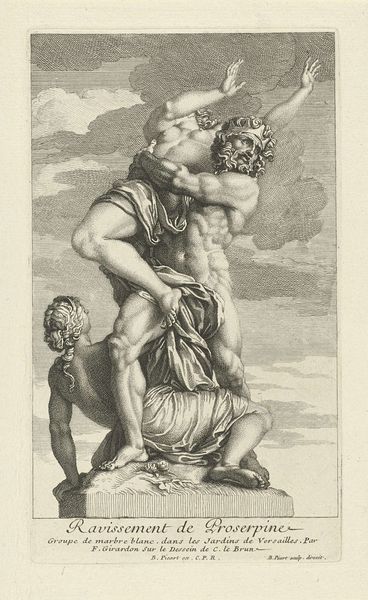
engraving
#
allegory
#
baroque
#
charcoal drawing
#
figuration
#
form
#
portrait reference
#
line
#
portrait drawing
#
history-painting
#
nude
#
engraving
Dimensions: height 316 mm, width 205 mm
Copyright: Rijks Museum: Open Domain
Richard Collin created this print, "Sater als kariatide," sometime in the 17th century. During this time, the Dutch Republic was a major center for printmaking, and artists often drew on classical mythology and imagery. Here, Collin presents a satyr, a creature from Greek mythology, known for its association with revelry and the wild. But instead of showing the satyr in a drunken dance, Collin depicts him in a moment of forced labor. The term "cariatide" in the title references a structural support in the form of a sculpted female figure. But Collin’s satyr is a subversion of this ideal, showing the figure in a state of tension. The satyr’s body is both idealized and animalistic, highlighting the uneasy balance between the human and non-human. He embodies the weight of expectations and the burden of societal roles. Collin’s print invites us to consider the complex ways in which power, identity, and representation intersect.
Comments
No comments
Be the first to comment and join the conversation on the ultimate creative platform.
